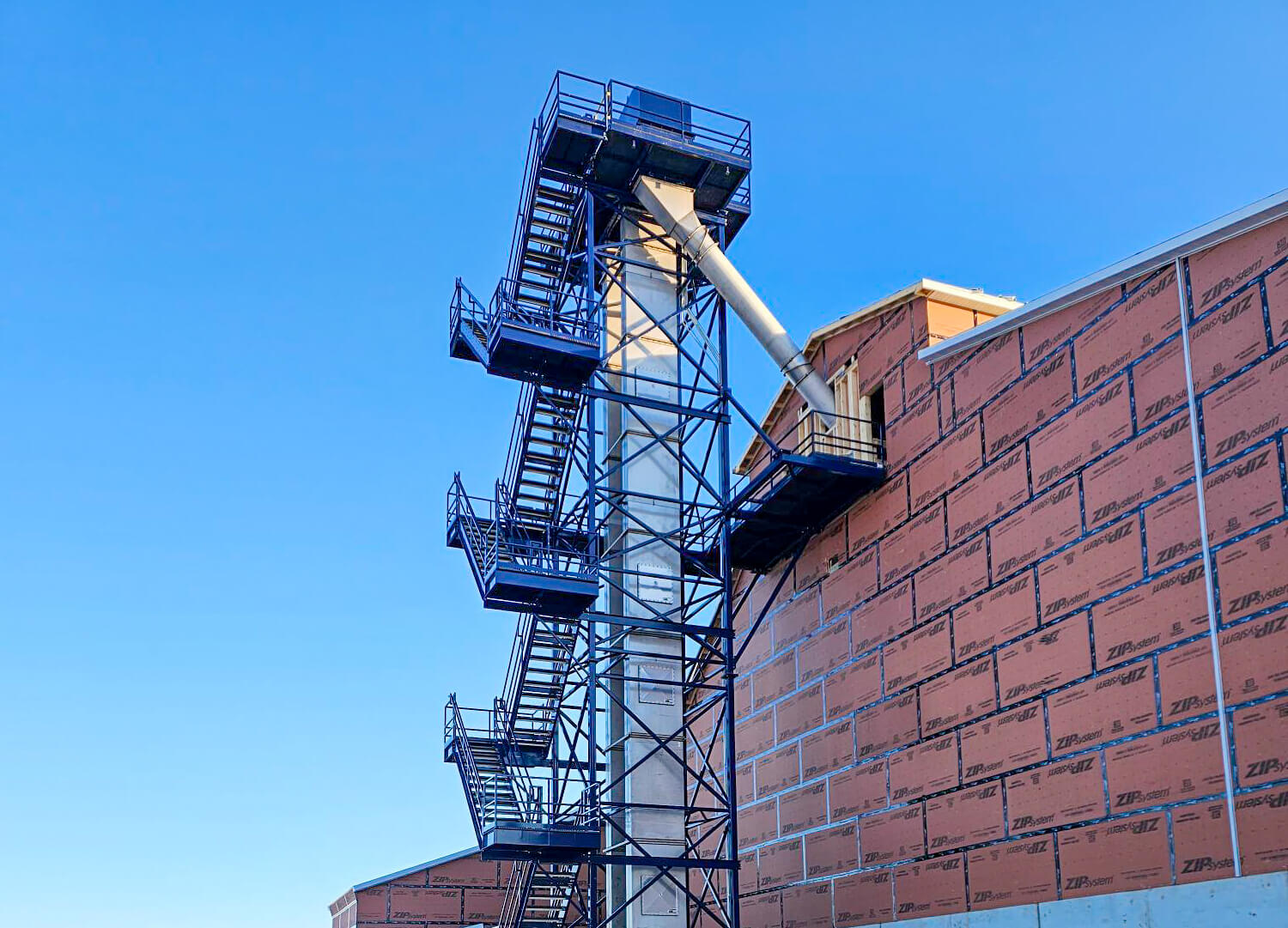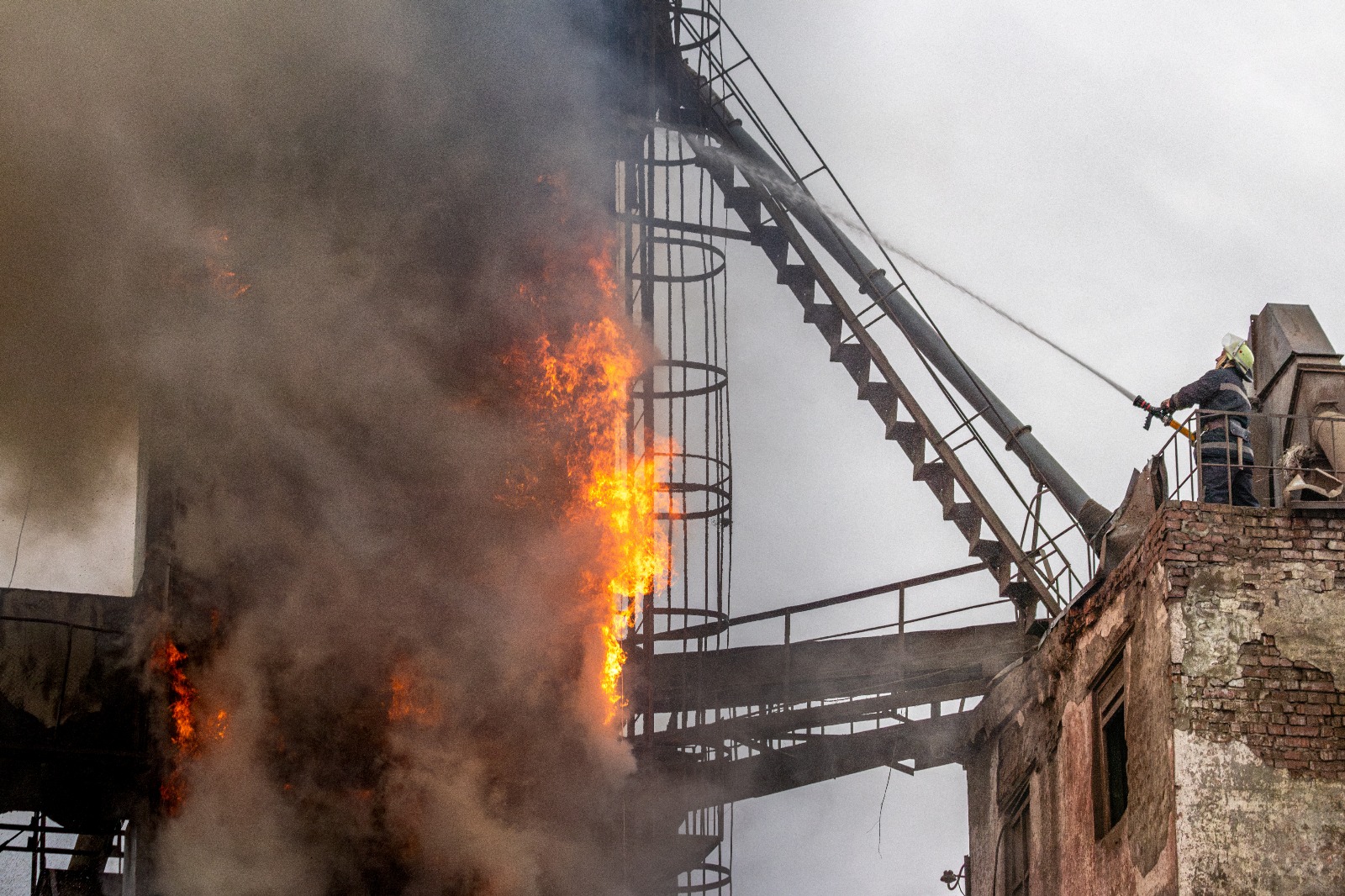Bucket Elevator Explosion Protection Solutions
What Bucket Elevators Are and What They Do
Bucket elevators are one of the most common methods of elevating bulk materials throughout the grain and feed industry.
They consist of a continuous belt fitted with buckets or cups at set intervals, moving material vertically between a boot pulley at the base and a head pulley at the top. Material enters through the boot—often fed by a chute or conveyor—and discharges at the head, typically into a distribution conveyor or distributor serving multiple destinations.
Bucket elevators are critical to efficient material handling—but they also represent a major combustible dust explosion risk if not properly protected.
Contact us

Potential Risks in Bucket Elevator Operation
Because bucket elevators handle fine, dusty materials within a confined enclosure, several ignition and explosion hazards are present:
- Sparks or Embers – Hot material from upstream equipment can enter the elevator and ignite suspended dust.
- Belt Slippage – Plugged chutes or overloading can cause friction at the drive pulley, creating a potential ignition source.
- Mechanical Failures – Broken buckets, bolts, or misaligned belts can rub against the housing, causing friction or impact sparks.
- Bearing Failures – Overheated bearings may serve as ignition points.
- Dust Dispersion – Material entering or discharging from the elevator stirs up dust clouds that meet all three explosion conditions: fuel, oxygen, and confinement.
The elevator leg housing provides the enclosed volume where an initial deflagration can occur—making proactive explosion protection essential.
Common Safety Challenges
- Preventing upstream ignition sources from entering the elevator.
- Controlling dust cloud formation inside the elevator housing.
- Managing airflow caused by belt and bucket movement that can spread dust and pressure waves.
These challenges require integrated systems that address both prevention and mitigation to maintain NFPA and OSHA compliance.
Boss Products’ Bucket Elevator Protection Solutions
Boss Products delivers engineered explosion protection systems for bucket elevators used in grain, feed, and bulk material handling operations.
Explosion Prevention
- Spark Detection & Extinguishing (Raptor Spark®) – Prevents hot particles or embers from upstream equipment from entering the elevator leg.
- Thermal and Alignment Monitoring (M-Jet®) – Detects bearing temperature, belt alignment, chute plugging, and slippage before they cause ignition.
- Dust Control Systems – Properly designed dust collection at the head and boot sections limits combustible dust concentration.
Explosion Mitigation – Passive Protection
- Explosion Venting (EV-VL) – NFPA 660-compliant vents relieve overpressure safely through the leg housing or head section.
- Flameless Explosion Venting (EV-VI) – Enables safe indoor venting without flame release.
- Exhaust Duct Isolation (Vigiflap®) – Prevents explosion propagation from dust collectors or connected equipment.
- Spark Detection in Upstream Equipment – Monitors plenum areas of hammer mills feeding into the elevator.
- Rotary Valve Isolation – Stops flame and pressure from propagating downstream through the discharge.
Explosion Prevention – Active Suppression (Raptor X®)
- Pressure Sensors in the boot and head sections detect deflagration at the earliest stage.
- Suppression Bottles extinguish the explosion before pressure rises to dangerous levels.
- Isolation Bottles protect inlet and outlet chutes, up-leg and down-leg housings, and exhaust ducting.
Additional System Options
- Explosion Isolation Valves (Vigiflap®) on airlift inlet ducts or return air ducting.
- Spark Detection/Extinguishing on airlift piping.
- Explosion Venting on filter receivers.
- Explosion Isolation Rotary Valves on hopper discharges.
Protect Your Bucket Elevators from Combustible Dust Explosions
Bucket elevators are vital to production—but without proper explosion prevention and mitigation systems, they can be one of the most hazardous points in your process.
- Keep your facility safe, compliant, and efficient.
Contact Boss Products to discuss a bucket elevator protection system designed for your operation.
"*" indicates required fields

